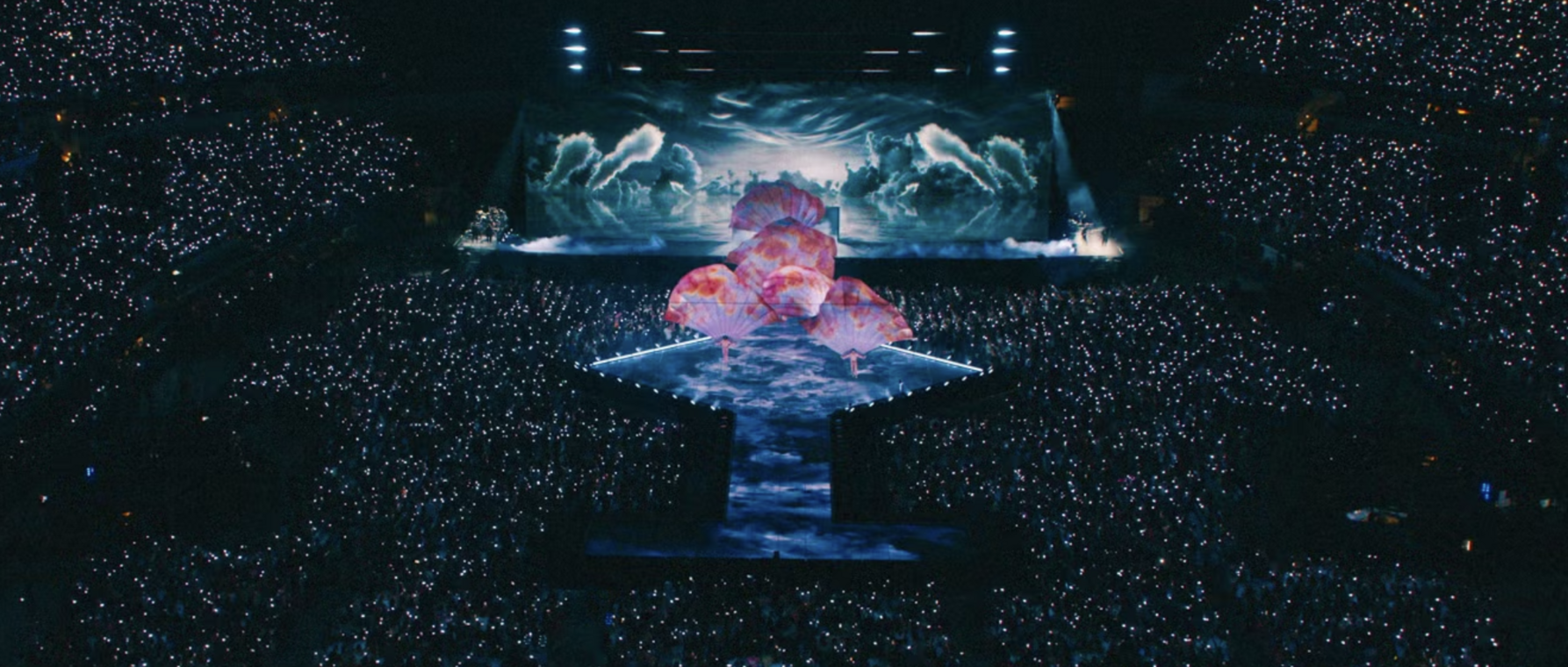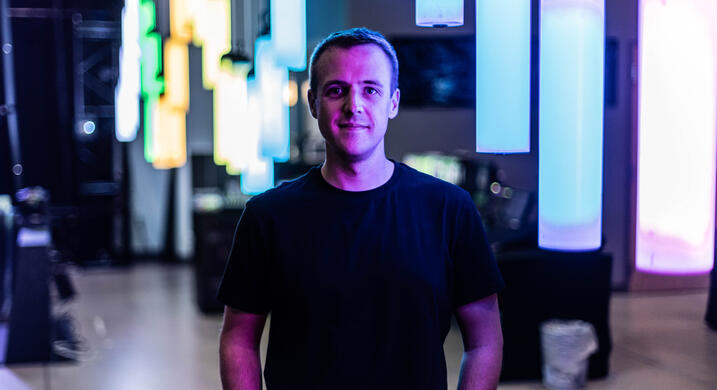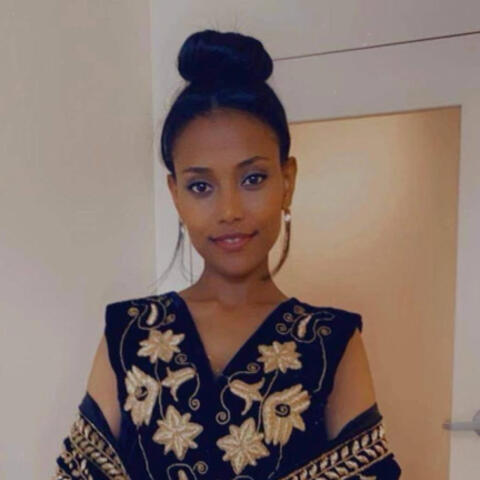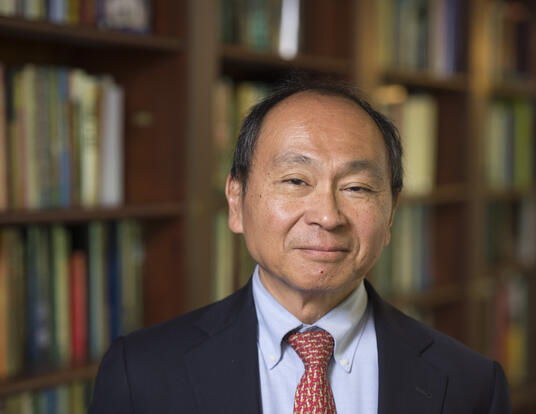The Show Must Go On. But How?
Derrick Bransby, PhD student

Research at Risk: Since World War II, universities have worked with the federal government to create an innovation ecosystem that has yielded life-changing progress. Now much of that work may be halted as funding is withdrawn. Find out more about the threats to medical, engineering, and scientific research, as well as how Harvard is fighting to preserve this work—and the University's core values.
Derrick Bransby studies how teams create, innovate, and learn under pressure. He discusses his research on the live event industry, the challenges and benefits of being a first-generation college and graduate student, and how his advisor, Professor Amy Edmondson, has guided him through the PhD process.
From Vision to Reality
I study the concert touring and live events industry. Lancaster County, Pennsylvania where I grew up, is the unlikely epicenter of live event production. Nearly 40 production-based vendors call the area home, alongside facilities where artists, dancers, and crews rehearse before they hit the road.
The current focus of my work is how professionals in this industry work together to turn an artist’s creative vision into reality. For example, there's a show developed by a company I’m working with. It has a massive video wall behind the stage. During the show, the center section of the wall lifts out and flips down on its side to become a stage. For the finale, the artist gets on top and rides out over the audience. It’s a 12,000-pound structure that stands nearly 30 feet tall but effortlessly floats over the stage, spins, and tilts. It’s spectacular to see in person.

Before the stage was reality, it was just a sketch—a giant mass floating in space. Initially, the artist and creative team weren’t thinking about the load on the arena of the roof or how the structure would break down to fit in a truck. They’re just thinking, “Wouldn’t it be cool if the stage could do all these things?” But soon, someone had to think about the physics and logistics—how does this idea translate to a machine? Is this possible to even build? What's the budget? What’s the timeline? How can the stage be set up and torn down quickly and moved from city to city?
One thing that’s stuck with me from my earliest interviews with professionals in this industry is their relationship with failure. On one hand, they told me they can’t fail. The show must go on. They have to deliver. On the other, it was clear failing was a part of the process. One industry veteran told me “We fail all the time. Whether we like to frame it that way to admit it, we do . . . when we’re doing something bespoke and what we designed didn’t work the first time, that’s why you build the first one. We couldn’t call that failure. It’s just what you need to do to get started. You build the five things that didn’t work to get to the one that does.”
This industry is filled with elite problem solvers, learners, and builders. It's an ideal place to study teams. Psychological safety—which my advisor at Harvard Business School, Amy Edmondson, has studied extensively—is undoubtedly part of what I see. But it’s more than that. It’s an extreme and supportive team climate—characterized by trust, curiosity, and candor—that allows people to take risks and push the boundaries forward. There is a solution-focused, action-oriented attitude deeply embedded in the culture of this industry that produces a unique work environment. I’m trying to understand it and bring it forward.
First-Generation Challenges—and Benefits
I grew up in Lancaster, Pennsylvania, close to Philadelphia. My dad is a funeral director. My mom is a dental assistant. I am the first in my family to go to college and earn a bachelor’s degree and the only person to pursue a PhD.
At times my academic journey has felt difficult to navigate—not having anybody to say, “I’ve been through this before, and here do X, Y, and Z.” On the flip side, there's something wonderful about the freedom to pursue higher education because I wanted to learn—not because I felt obligated. After college, I wasn't sure I'd ever go back. But later, I pursued an MBA part-time and became interested in management and organizations. That ultimately led me to the PhD program at Harvard.
My family and friends have some idea of what I'm doing. They know I do research at a business school and that I study creativity and innovation. They don’t have deep expertise but that’s a benefit because they ask questions that fundamentally affect my research. They help shape how I explain my work and encourage me too to consider new perspectives.
An Opportunity to Explore
I came to Harvard wanting to work with my advisor, Amy Edmondson, whose work on teaming and psychological safety influenced my thinking as a master’s student. I share her interest in learning and how we can create environments where people can share ideas, take risks, push boundaries, and execute.
Amy has been instrumental in guiding me through the PhD process. She's provided me with a lot of flexibility and encouraged me to pursue my intellectual curiosity. When I told her I wanted to study concert touring, she could have redirected me to a more traditional industry. Instead, she encouraged me to pursue my interest and have a conversation.
That's the beautiful part of the PhD program at Harvard. It’s an opportunity to explore and discover what you're interested in. It’s important to make a commitment that grounds and guides you. But hold it lightly because you're going to learn something new and things are going to change. It's important to stay flexible. I think Amy has exemplified that for me.
Banner image courtesy of Taylor Swift | The Eras Tour (Taylor's Version) on Disney+.
Get the Latest Updates
Join Our Newsletter
Subscribe to Colloquy Podcast
Simplecast





